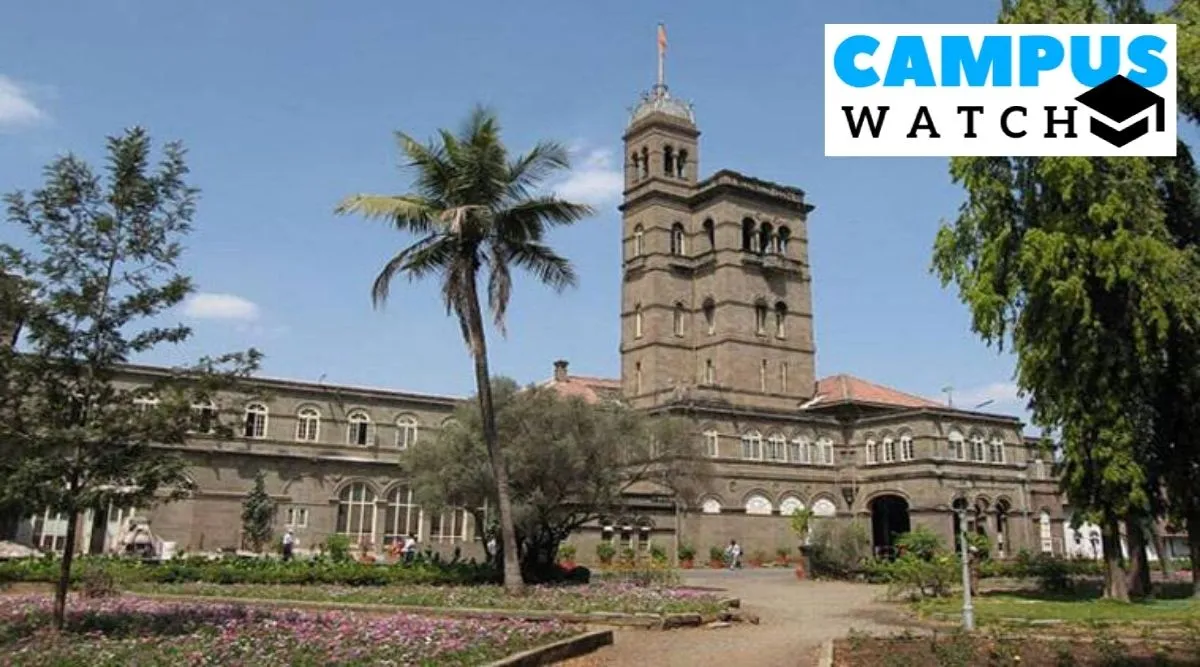 Savitribai Phule Pune University (SSPU).
Savitribai Phule Pune University (SSPU). As he stopped in front of the lofty main building of the Savitribai Phule Pune University, Vice-Chancellor Dr Nitin Karmalkar, who acted as a guide to participants of the Heritage Walk, restarted after the pandemic Thursday, informed participants that the structure had recently completed 151 years.
Once the residence of the Governor of Bombay during the British Raj, the main building was built in 1871. Designed by James Trubshawe at a cost 1.75 lakh Sterling Pound, its construction cost was heavily criticised by members of the then British Parliament.
“The city was then called Poona and the main building was built on the outskirts as the monsoon residence of the Governor while Mahabaleshwar was the summer residence. The work on it started in 1864 when Sir Bartle Frere was the Governor and it took seven years to complete. The British Parliament criticised it heavily since the construction of such a palatial house just after the cotton crash in Bombay was considered extravagant,” said Shraddha Kumbhojkar, head of the history department in SPPU.
The university’s website also gives an account of the history of the main building. “The cost of residence was nearly six times the amount raised by the sale of the Governor’s previous residence. The British Parliament termed it as ‘a typical instance of the extravagance and insubordination of the Governors of Bombay’. Sir Frere defended his action staunchly, the house was not habitable by the time he left India in 1867. His successor, Sir Seymour FitzGerald carried out the furnishing and decoration, and he in turn was criticized for being extravagant, especially for the sterling pound 500 chandelier in the ballroom-which still sparkles, adding to the grandeur of the ballroom,” says the website.
In June 2008, then vice-chancellor of SPPU announced that the restoration work of the main building, estimated at Rs 8 crore, would begin. It took several years and Rs 14 crore had been spent by the time the A grade listed heritage structure was restored to its former glory.
Inspired by Prince Albert’s Osborne House on the Isle of Wight, architecturally, the building defies classification though its spiritual antecedents are Italian and the 80-feet flag tower has been described as a ‘Victorian rendering of an Italian campanile’. Made out of basalt rock, the structure is an imitation of the original gothic style and is adorned with distinct gothic features like gargoyles, arches and pointed towers.
While the higher floor houses the offices of the vice-chancellor, the ground floor now holds several meeting rooms where meetings like the senate take place and a museum of rare artefacts from the Shivaji era now open to people and below it lies an underground tunnel which connects the main building to the Potdar Sankul, then the kitchen of the Governor’s house. The tunnel served to transport food from kitchen to the ballroom during parties, serving to keep food from being tampered and also ensuring that servants “serve but are not seen”.
Various specimens of interest from geology, anthropology, history departments such as coins and currency, swords, shields and armour from Shivaji Maharaj’s era, several types of rare stones, scrolls and more objects of heritage value can be seen inside the museum.
As the university restarted its Heritage walk Thursday, it added some valuable treasures on the list of things to see at the main building – paintings by artist and antiquarian James Wales, a Scottish painter who spent nearly four years in Poona in the late 18th Century, based at the British residency.
“The paintings by Wales are an important link in documenting the Maratha history of that period and his rare work on Maratha warriors and statesmen such as Mahadji Shinde and Nana Fadnavis now hang in the main building after being restored. I have been privileged to work in this heritage structure and we invite people to come for the walk and become a part of its history and journey,” said Karmalkar.
- The Indian Express website has been rated GREEN for its credibility and trustworthiness by Newsguard, a global service that rates news sources for their journalistic standards.

